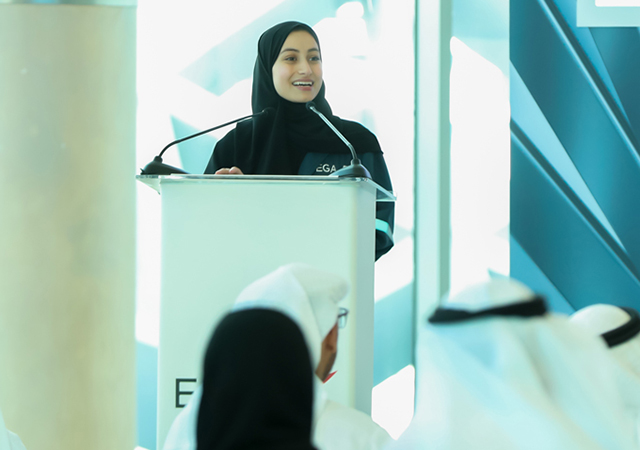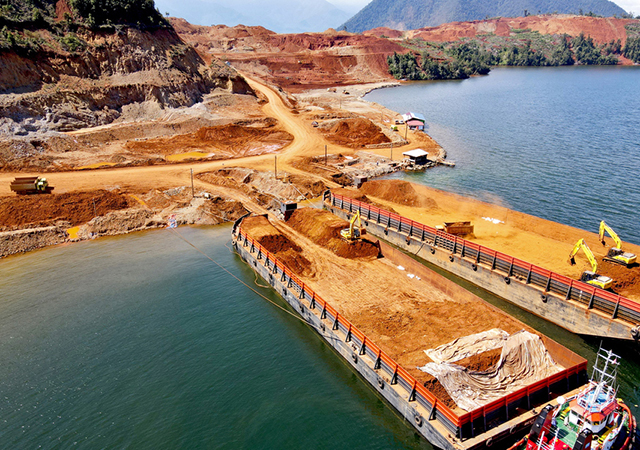
 Peter Kaznacheev
Peter Kaznacheev
As global aluminum consumption is set to hit 124 million tons by 2030, the industry faces increasing pressure to mitigate its considerable carbon footprint. Aluminum production, known for its high energy demands, is a major contributor to CO2 emissions within the industrial sector.
However, its critical applications in transportation, energy, and consumer products continue to fuel demand. In this context, Arthur D. Little's recent analysis explores how the Gulf Cooperation Council (GCC) can spearhead the decarbonisation of the aluminum sector while simultaneously enjoying economic benefits.
Arthur D. Little's report, “Aluminum: The Path to Green”, emphasises that the GCC is uniquely positioned to lead the global transition to sustainable aluminum production by capitalising on its natural resources. With vast reserves of natural gas, the region currently produces over 6 million tons of aluminum annually, benefiting from some of the lowest energy costs worldwide. This energy efficiency not only enhances competitiveness but also results in lower carbon emissions compared to regions reliant on coal-powered production.
The integration of solar energy into the aluminum production process is on the rise. Thanks to its abundant solar resources, the GCC has a natural advantage in implementing renewable energy solutions, particularly in energy-intensive stages like smelting. This transition not only contributes to global decarbonisation efforts but also aligns with the GCC's broader sustainability objectives.
Recycling also plays a crucial role in fostering a sustainable aluminum ecosystem. Local leaders, such as Emirates Global Aluminum (EGA), are making significant strides, including the establishment of the nation’s largest aluminum recycling plant, which is expected to process 170,000 tons annually. By boosting recycling initiatives, the GCC can lessen its dependence on raw material extraction and emerge as a global leader in circular economy practices.
Looking ahead, projections suggest that by 2050, half of aluminum production could come from recycled materials, reinforcing the GCC’s status as a hub for sustainable industry.
On the technological front, regional aluminum producers are increasingly embracing innovative solutions like carbon capture, utilisation, and storage (CCUS), as well as exploring hydrogen-powered smelting. These advancements, combined with Industry 4.0 technologies that enhance production efficiency, position the GCC as a leader in green aluminum initiatives.
Ilya Epikhin, Global Head of ADL’s Metals & Mining competence center at Arthur D. Little, stated, “With major projects like EGA's new aluminum recycling plant, the GCC is making significant progress toward a sustainable future. Innovations in recycling and renewable energy are establishing the region as a global hub for green aluminum.”
Peter Kaznacheev, Principal in the Energy and Utilities practice at Arthur D. Little, added, “Aluminum is vital for the future of energy, transportation, and construction. The Gulf region has a great opportunity to lead in aluminum production while transitioning to greener alternatives. This shift will not only reduce environmental impacts but also enhance the GCC’s position in the global market.”
The GCC is known for its innovative spirit, with many of its major cities built on principles of advanced design and technology. This drive for progress, combined with the region's strengths, positions the GCC nations well to adopt cutting-edge technologies for decarbonising aluminum production. Major local producers have formed strategic partnerships with leading global companies and technology providers. Examples include collaborations between Ma’aden and Alcoa in Saudi Arabia, and the joint venture Qatalum between local QAMCO and Norway’s Hydro in Qatar.
These efforts are part of broader national strategies focused on economic diversification and sustainability. Initiatives like the UAE’s Operation 300bn, Saudi Arabia’s Vision 2030, and Qatar’s National Development Strategy 3 (NDS3) illustrate how aluminum production is central to developing future-oriented industries. Additionally, the potential establishment of a regional metals exchange in Saudi Arabia could transform the GCC into a key player in low-carbon aluminum trading, unlocking new investment opportunities.
Arthur D. Little's analysis concludes that by leveraging its existing advantages—such as access to low-cost energy, technological innovation, and a growing circular economy—the GCC can significantly influence the global aluminum industry's transition to sustainable practices. This evolution will not only address the climate crisis but also advance the region's economic goals, establishing the Gulf as a leader in green industry.

